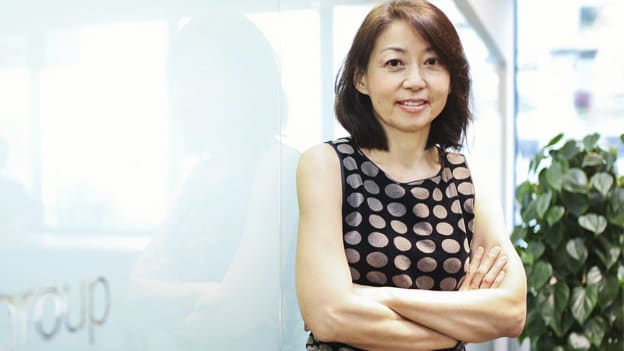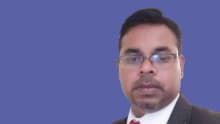The key to success is to get the future-first before anyone else: CXA Group's CEO

Rosaline Chow Koo, the Founder and CEO of CXA Group, has an incredible story to tell. From nurturing a dream to building it successfully, she is known as one of the top women in tech today. Koo’s professional and personal sacrifices enabled her to establish CXA’s distinct platform and caliber.
Rosaline Koo grew up in a poor immigrant family in South Central LA during the Watts Riots that helped Rosaline Koo develop survival skills and a strong work ethic early on. She went on to earn a Cybernetics Degree at UCLA and MBA from Columbia University. From supervising a production line for P&G in rural Iowa to Wall Street, Koo moved to Asia in the mid-90's and launched 2 funded startups during the dot-com boom. She then transitioned to the insurance industry, and over 8 years, grew Mercer and Marsh’s employee benefits business by 800%, and across 14 Asian countries.
In 2013, she founded CXA Group, a technology startup that brings evidence-based wellness into the workplace to improve employee health and control healthcare costs. Clearly seeing the benefits that technology could bring to the workplace in Asia, where chronic disease is hitting 10 years before the West, Rosaline tried to persuade her employer to invest in it. After five years of failed attempts, she left to build the CXA platform on her own. Convinced that the antiquated paper-based industry was ripe for disruption, Rosaline invested her entire life savings of $5 million, and borrowed $5 million more, to establish CXA. She recruited a world-class team to build Asia’s first benefits and wellness marketplace platform and acquired Singapore’s largest home-grown employee benefits brokerage. Today, CXA has grown into a $100 million company that works with employers to transform current healthcare spending from treatment into benefits and wellness programs.
You have an incredible story (of funding $10M of your own money in a deep belief for a healthcare vision and a personal/professional journey that has taken you from San Francisco to Asia), and now you are now recognized as one of the leading healthcare entrepreneurs in Asia. How did you embark on this journey?
The reason I decided to build my dream on my own was because I was trying to convince my old firm for 5 years to do this. But as it turned out, the global CEO got fired and then my global healthcare boss got fired. I knew I was next. So, I convinced them to vest all my shares and bonuses and let me go. That way, I could get the money to start my own company since so much was locked away in shares and bonuses because I never missed a budget in 8 years growing Mercer 800%. I was convinced it would work as clients in all countries faced the same challenges of rising healthcare costs and one-size-fits-all benefits. It was about using data to personalize benefits and wellness services for each employee and technology to connect the entire ecosystem.
There is always an opportunity, now you have the freedom to do it your own way. Are you happy the way things turned out? Do you think it gave you that opportunity?
Yes, I believe in destiny and I’m thrilled since I can move at hyper speed and focus on execution instead of justifying, begging, and writing business cases on the nuances of Asia. Not only was this my third startup, all I’ve done in the last 20 years is startups and corporate turnarounds. So, I’m not really a person that easily gives up. It became a deep obsession since chronic diseases are getting worse over time.
Tell us about the challenges you had to face when you migrated to Asia to start this? Mercer said no to your idea 5 times. What was it that you saw that probably they did not see as an opportunity?
What I saw was hyper growth and that a current solution wasn't there for the entire industry to fix the rising cost issue due to aging populations and chronic disease. But since I had built two startups during the dot-com era and worked on 401k defined contribution retirement plans during my New York banking stint, I actually knew how to use data and technology to build a new defined contribution healthcare product. And since we had grown 800 percent, I knew there was a demand. It would have been easier if I did it for Mercer since they already had the brokerage licenses, brand, offices and clients. All I needed to do was $10m to build the technology, but they never agreed to invest in Asia.
Why did you choose Asia in particular? What were the industry dynamics that you saw in this region?
Asia is different from the rest of the world. First thing, chronic disease came to Asia 10 years earlier and at a lower BMI of 23 versus 25 in the West. Asians have more abdominal fat and more tiger moms who raise studious kids who may be less physically active. Then the food choices here are also different with more carbs, sugar, fried food, and more food courts. Additionally, employee benefits in Asia are predominantly employer-sponsored vs. nationalized health in Europe, Australia and Canada. Asia employers cannot sustain double-digit annual premium increases as well as the spiraling salaries from the on-going talent war. With this perfect storm in Asia, employers have to get at the root cause of their employee health issues in order to fix the costs.
Tell us about the problem statement and how has it evolved as we go deeper and deeper into the business? How have you managed to run the business and scale it up successfully?
We are still solving the rising cost of healthcare, but our business model has been much refined in terms of how we use data to solve the problem. I always knew I was going to shift treatment money into prevention to improve employee health; but once we got deeper, we learned so much about the complexities of the employee health ecosystem.
We’re working with reinsurers to use various data points such as health screening, lifestyle and claims data to score each employee and give each firm an aggregate health score. That way we can predict the future disease prevalence and group medical premium. So, if companies improve their health score, we can use the data as brokers to negotiate reduced premiums.
As part of the success of the business model which is about the journey of prevention, how has the journey been?
We actually pre-select Fortune/Global 500 companies who care about employee engagement and wellness and being employers of choice. Such companies work with us together on the employee communications, health days and on creating benefits that could be tailored to each employee’s life stage and health needs. So, the engagement has been really high primarily because it really matters to these firms.
Who are the customers for CXA group? How does the platform cater to the various stakeholders: (i) employers, (ii) employees, (iii) providers and (iv) distributors?
Employees get a wallet funded by the monetized value of their company’s insurance + healthcare spend. If they have duplicated coverage from their working spouse or are young and fit, then they can shift those amounts to something more. They can also assess their lifestyle, upload their blood test results, talk to a tele-doc and e-pharmacy or use their money at local wellness providers from our discounted, cashless marketplace. They can be rewarded if they lose weight, quit smoking or participate in health screenings or win a fitness challenge.
We help employers split employees into teams for corporate challenges to leverage peer pressure, leadership and fun and get the less motivated on board. They can eat, take blood tests and exercise together. Gamification works to make the experience more fun.
For employers, we provide anonymized aggregated data analytics by connecting the providers in the whole ecosystem (i.e., insurers, health screening, TPAs, panel networks, gyms, diabetes management, weight management, nutrition, smoking cessation) into a one-stop-shop and digitizing all the paper, information flow and payments.
I do take chances on people by empowering them to do lots of different things. People know what they are good at, but I always want people in jobs beyond their comfort zones because that’s how they can be stretched
What are the interesting trends in healthcare and insurance you are observing in Asia and how is that different from US and Europe? What are the things you look ahead in the business?
We are already expanding outside of Asia. Our new investors from Europe, America and Asia will all come in as distribution clients with very large enterprise bases, not just in Asia but in North America and Europe as well, so we plan to go global.
The next phase will be really exciting since our impact will be much greater. Not only will we be going directly to HR, but to all the companies that have thousands of enterprise and SME clients. Distributors such as banks, insurers, telcos and payroll companies will white-label our SAAS employer and employee platforms to cross-sell benefits, insurance and financial services products to the employees of their enterprise base. They’re using our platform because our rich and unique data and recommendation engine will help them sell the right services to the right people at the right time.
We’ll soon be announcing our fundraising round where all our new investors will be coming in as clients to help us grow. That to me is a great affirmation of our business model and potential.
You have led startups and corporate turnarounds for 25 years in US and Asia, what are the interesting lessons you have learned in your career? What skillsets have you learned from startups and the turnarounds?
In addition to working in startups and turnarounds, I’ve been fortunate to work in different industries (FMCG, Banking, Tech, Insurance, Professional Services) with different business models, so it’s easier for me to come up with unconventional ways to solve industry problems. The key to success is to get the future-first before anyone else. So, the first skillset is the ability to imagine a very different future, given the same constraints everyone faces in the industry.
The second skill is execution -- the ability to transform a dream into reality. In many of my roles, I was the go-to-person, starting things from a blank slate or fixing something broken. I believe there’s a valid excuse for every single failure, but if you learn how to overcome those valid excuses, you can get to the future first no matter what happens. One of the critical factors for success in life is how you react to setbacks – you can either let hardship drag you down or you can learn and become stronger.
The third is leadership. Since you can’t do it alone, it’s important to know how to galvanize the best talent to follow you on your journey towards accomplishing the mission.
How would you define your leadership style?
I like to move people around to different roles so that they can learn different skills. If you're going on a super hard journey where you going to work together in the trenches for years, you want everyone to come out of it feeling a sense of achievement and fulfillment. I think of skills as muscles that you have to exercise and challenge in order to grow stronger. How do I put high-potential talent into different areas where it intersects with their interests and intersects with their company’s mission as well? I do take chances on people by empowering them to do lots of different things. I don’t like to micro-manage and believe there are many paths to problem-solving. People know what they are good at, but I always want people in jobs beyond their comfort zones because that’s how they can be stretched.












